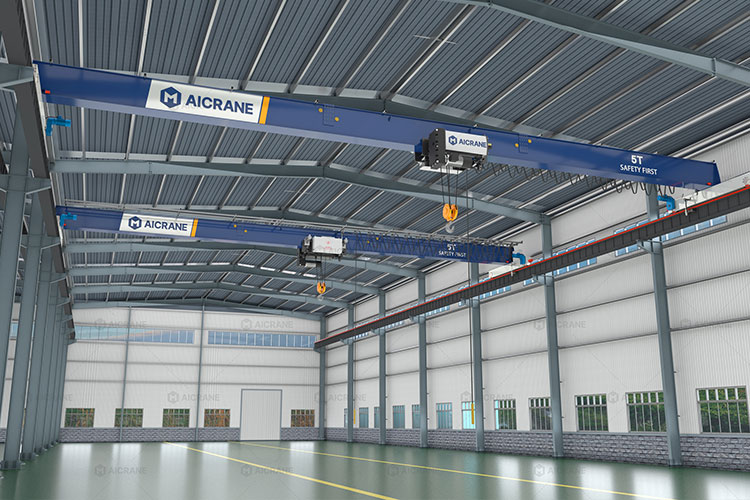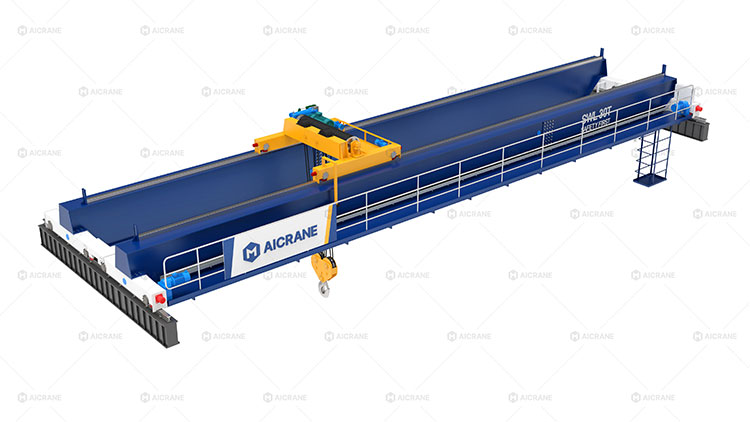Overhead cranes play a critical role in material handling operations across various industries such as manufacturing, warehousing, shipbuilding, and power generation. As technology continues to evolve, the integration of Variable Speed Drives (VSDs) in overhead cranes has become increasingly common. These electronic devices control the speed and torque of the crane’s motors, offering numerous operational advantages. However, while VSDs improve performance and safety, they also influence the initial and ongoing costs of the crane system. In this article, we will explore how Variable Speed Drives affect the overhead crane cost, considering both the short-term investment and the long-term operational savings.

What is a Variable Speed Drive?
A Variable Speed Drive (also known as a Variable Frequency Drive or VFD) is an electronic device that adjusts the speed and torque of an electric motor by varying the frequency and voltage supplied to the motor. In the context of overhead cranes, VSDs are typically used to control the hoisting, traversing, and long travel motions.
Traditional cranes often operate with fixed-speed motors, where motion starts and stops abruptly. In contrast, VSDs allow for smooth acceleration and deceleration, precise speed control, and reduced mechanical stress.
Initial Cost Impact of Variable Speed Drives
1. Higher Equipment Costs
The most immediate effect of adding VSDs to an overhead crane system is an increase in the initial equipment cost. VSDs are relatively expensive compared to standard motor starters. Depending on the crane capacity, number of drives, and complexity of the control system, the cost of VSDs can add anywhere from several thousand to tens of thousands of dollars to a crane project.
For example:
-
A basic 5-ton single girder overhead crane may cost $20,000–$30,000 without VSDs.
-
Adding VSDs to all motion axes could increase the cost by $3,000–$8,000.
-
For larger systems such as a 50-ton double bridge crane, the VSD cost can easily exceed $15,000.
2. Complex Electrical Systems
VSDs require more sophisticated control panels, harmonic filters, and sometimes additional cooling systems. This further increases the material and engineering costs during the design and manufacturing phase. In some cases, integration with programmable logic controllers (PLCs) and automation software is also necessary.
3. Installation and Commissioning Costs
Installing a VSD-based system may take longer and require skilled technicians. The commissioning process is more complex, involving parameter setup, tuning, and sometimes system integration. All these factors contribute to higher upfront labor and service costs.

Long-Term Cost Benefits of Variable Speed Drives
Despite the higher initial cost, VSDs can offer significant cost savings and operational advantages over time, which may outweigh the added investment.
1. Reduced Mechanical Wear and Maintenance
VSDs allow for soft start and stop of the motors, which reduces mechanical stress on gears, brakes, couplings, and other components. This leads to:
-
Less frequent component replacement
-
Reduced maintenance downtime
-
Longer equipment life
For example, brake wear is significantly reduced because the crane decelerates electrically before the mechanical brake is engaged.
2. Energy Savings
VSDs are inherently energy-efficient because they adjust the motor speed based on the actual load and operation. Unlike fixed-speed systems that run at full power regardless of demand, VSDs only consume the energy required at each moment. This leads to lower electricity bills, especially in operations with frequent acceleration, deceleration, and partial load handling.
Over the lifespan of the crane, energy savings can be substantial—often reducing operational energy costs by 20–30%.
3. Increased Productivity
Smooth and precise control of crane movements enhances load positioning accuracy and reduces cycle time. Operators can lift, lower, and move loads more confidently and efficiently, reducing handling time and increasing throughput.
Higher productivity translates to greater output for the same labor input, improving overall profitability.
4. Improved Safety
VSDs contribute to safer crane operation by minimizing load swings through gradual starts and stops. This not only protects workers and equipment but also reduces the risk of accidents and associated costs such as injury claims, insurance premiums, and downtime.
5. Integration with Automation Systems
Modern material handling systems increasingly rely on automation. VSDs support seamless integration with sensors, PLCs, and industrial networks, enabling advanced features like remote diagnostics, automated load handling, and data logging. These capabilities enhance operational insight and enable predictive maintenance strategies that further reduce costs over time.

Total Cost of Ownership (TCO) Consideration
When evaluating the impact of Variable Speed Drives on overhead eot crane costs, it’s essential to shift from a simple upfront price perspective to a Total Cost of Ownership (TCO) analysis. TCO includes:
-
Initial purchase and installation
-
Maintenance and repair
-
Energy consumption
-
Downtime and productivity loss
-
Operator efficiency and safety
-
Lifecycle duration of the crane system
By this metric, VSD-equipped cranes often demonstrate superior value over a 10–20 year operational period. Although upfront costs are higher, savings in maintenance, energy, and productivity frequently offset these expenses within a few years of operation.
When Are Variable Speed Drives Justified?
VSDs are particularly beneficial in:
-
Heavy-duty and high-cycle applications: Where cranes run for extended hours or handle heavy loads frequently.
-
Precision handling environments: Such as manufacturing, mold assembly, or power plants.
-
Facilities with rising energy costs: Where efficiency gains directly improve cost structure.
-
Projects with a long lifecycle: Where the cumulative savings over time outweigh the higher initial investment.
On the other hand, for light-duty or infrequently used cranes, VSDs may not offer a strong return on investment.
Conclusion
Variable Speed Drives significantly influence the cost of an overhead crane—raising the initial investment but reducing long-term operating expenses through improved energy efficiency, lower maintenance, and enhanced safety. For many industrial applications, the benefits far outweigh the added cost, especially when analyzed over the crane’s lifecycle.
Buyers and project managers should evaluate their specific needs, operating frequency, and long-term goals when deciding whether to include VSDs in their overhead crane systems. When chosen wisely, Variable Speed Drives not only pay for themselves over time but also elevate overall crane performance, making them a smart investment for the future of material handling.